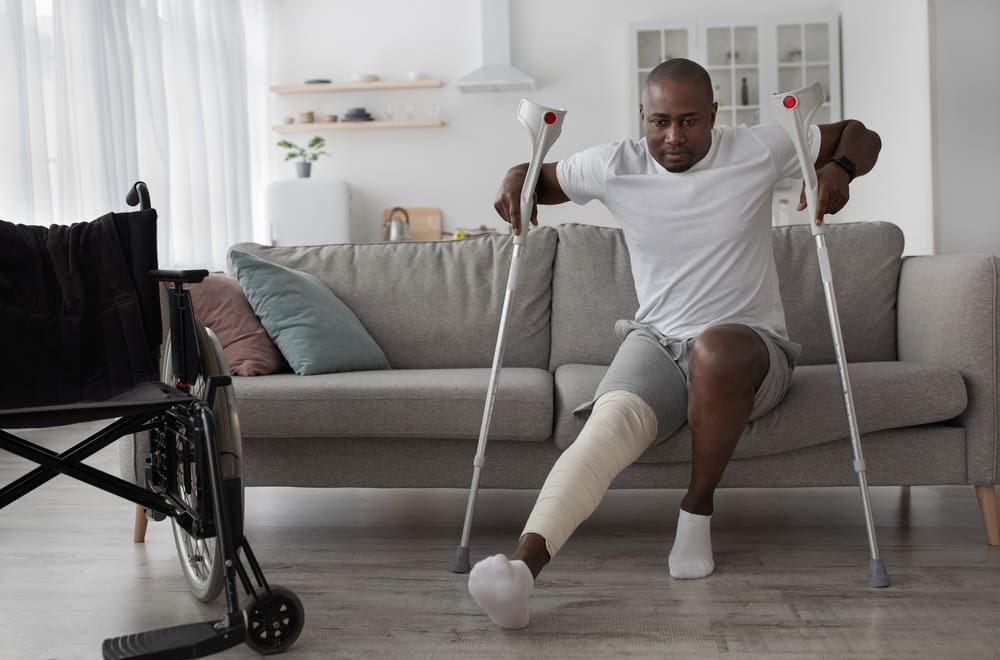Osteoporosis is often perceived as a disease that primarily affects older White women, but recent research has uncovered a more nuanced picture, particularly within the Black community.
The notion that Black individuals are largely unaffected by osteoporosis has contributed to a significant gap in awareness, prevention, and treatment. Studies now show that while Black populations, especially those aged 18 to 49, may have lower rates of diagnosed osteoporosis, there are complex factors at play. These include genetic predispositions, lifestyle factors, and disparities in healthcare access that can exacerbate the risk of bone health deterioration.
The complexity of bone health disparities within the Black community highlights the importance of shifting focus toward understanding the unique risks, challenges, and solutions that exist. Emerging research has begun to explore how genetics, vitamin D metabolism, and cultural habits all intertwine to shape the bone health outcomes of African Americans. These insights bring to light the urgent need for better bone health awareness and tailored interventions to address this critical issue.
Risk factor assessment
Although osteoporosis may not be as frequently diagnosed in Black individuals compared to other groups, several risk factors make this community vulnerable to bone health issues. One significant factor is vitamin D deficiency, which is more common in people with darker skin due to melanin’s effect on the skin’s ability to produce vitamin D from sunlight. Inadequate vitamin D can lead to weaker bones, as it is essential for calcium absorption and bone metabolism.
Access to healthcare is another pressing issue, with many Black individuals facing barriers to receiving bone density screenings, a critical tool in early osteoporosis detection. Without early diagnosis, preventive strategies may be delayed, allowing the disease to progress unnoticed. Socioeconomic factors, including lack of access to quality healthcare and insurance, also contribute to this disparity. Together, these factors create a perfect storm that increases osteoporosis risk.
Prevention strategies
Preventing osteoporosis requires a multifaceted approach, particularly for the Black community, where awareness and access to preventive measures are limited. Regular weight-bearing exercises, such as walking, jogging, and dancing, are vital for strengthening bones and maintaining bone density. In addition, resistance training helps improve bone strength and supports muscle mass, both of which are critical in preventing osteoporosis.
Adequate calcium intake is another essential factor. A balanced diet that includes calcium-rich foods such as leafy greens, fortified plant-based milk, and tofu can support bone health. While dairy products are a common source of calcium, alternatives are necessary to accommodate individuals with lactose intolerance or those following plant-based diets.
Vitamin D supplementation is also an important consideration, especially for those with limited sun exposure or those living in areas with fewer sunny days. Regular health screenings should be emphasized to detect early signs of bone loss. Early intervention through lifestyle modifications can greatly reduce the risk of osteoporosis.
Nutritional considerations
Diet plays a crucial role in maintaining bone health, and the dietary habits of the Black community need to be considered in crafting effective strategies. Traditional foods such as collard greens, beans, and sweet potatoes are naturally rich in nutrients that support bone health. However, many African American diets may be lacking in sufficient calcium and vitamin D. The challenge lies in ensuring that nutritional recommendations fit within cultural food preferences.
Incorporating calcium-rich foods that go beyond dairy, such as fortified cereals, nuts, and green leafy vegetables, is essential. Additionally, increasing the intake of vitamin D through fortified foods or supplements can help address the widespread deficiency within the community. It’s vital to recognize the role of plant-based protein alternatives as well, which are increasingly becoming a staple in many households.
Exercise recommendations
Exercise is a cornerstone of osteoporosis prevention, and the Black community stands to benefit from a more robust focus on physical activity. Weight-bearing exercises are essential for stimulating bone growth and improving bone density. Walking, jogging, dancing, and even gardening are excellent ways to keep bones strong.
For those who may have existing health conditions or limitations, low-impact exercises such as swimming or cycling provide a safer alternative while still promoting bone health. Resistance training, using body weight, free weights, or resistance bands, is another important element of a comprehensive exercise routine. It helps increase bone mass and prevent the bone loss that comes with aging.
Healthcare engagement
Regular healthcare visits and bone density screenings are essential to reducing osteoporosis risk. Engaging with healthcare providers regularly allows for personalized advice based on individual risk factors, including family history, lifestyle, and nutrition. Conversations about bone health, particularly for younger Black individuals, need to become a priority in medical settings.
Additionally, medication review and lifestyle counseling should be part of ongoing health management. Healthcare providers should consider the individual’s age, bone health history, and any underlying conditions that may exacerbate bone loss. Collaborative healthcare efforts can improve outcomes, ensuring that individuals receive the support they need to maintain optimal bone health.
Community outreach initiatives
The key to tackling osteoporosis risk within the Black community lies in education, outreach, and cultural competency in healthcare. Community-based initiatives that provide education on bone health, offer access to affordable screenings, and create supportive environments for individuals with osteoporosis are vital for reducing disparities. Furthermore, culturally relevant programs that resonate with community members and address the unique challenges faced by African Americans can play a pivotal role in fostering a more informed and proactive approach to bone health.
Through concerted efforts, such as public health campaigns and local support groups, the Black community can become better equipped to prevent and manage osteoporosis. These initiatives can help close the gap in healthcare access and awareness, ultimately leading to improved bone health outcomes for African Americans.













